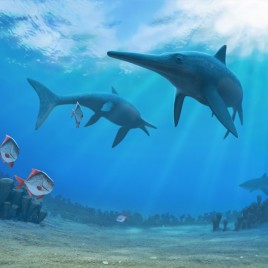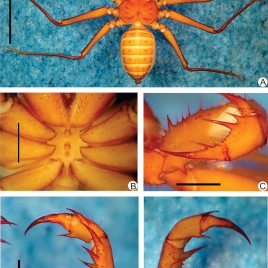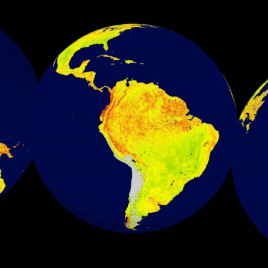New lung cancer screening guidelines have been released by the Canadian Task Force on Preventive Health Care. The guidelines take into account the latest evidence and aim to balance the benefits of early detection against the harms caused by overdiagnosis and invasive testing. The new guidelines recommend annual CT scans for adults aged 55-74 years […]
Growing hearts in 3D
Growing realistic human tissue outside the body is now possible thanks to the recently developed “person-on-a-chip” according to researchers at University of Toronto. The new technology, called AngioChip, could one day be used to repair or even replace damaged organs. In the meantime the researchers believe their development offers a new tool for discovering and testing […]

Improving cataracts outcome using stem cells
A new study is showing that preserving the stem cells within the eye might be a more effective way to treat cataracts, at least in children. Researchers surgically removed the damaged lens using a new technique that allowed them to preserve the lens epithelial stem cells. The minimally invasive surgery facilitated functional lens regeneration in […]
Meat - The great evolutionary kickstarter
It was the addition of meat into the human diet, along with tool use, that could have contributed to our ancient ancestors’ improved speech and the ability to regulate body temperature, researchers suggest. In the past the cooking of food was thought to drive the changes in tooth size and facial features of our ancestors. […]

Protecting healthcare workers – Masks v. Respirators
Respirators and surgical masks both help protect health workers from respiratory infections, however there has been a debate about which is more effective and different guidelines provide different recommendations. A review of the accumulated evidence does not suggest that the N95 respirator is superior to surgical masks. The authors suggest a randomized controlled trial, […]

Solving the Disappearance of the Ichthyosaur
The Ichthyosaur, a dolphin-like reptile, ruled the oceans at the time of the dinosaurs, but then disappeared from the fossil record. Now new research seems to have figured out why. Their demise appears to be the result of climate change and a slow rate of evolution. Ichthyosaurs became extinct 90 million years ago, 28 million […]
Public health and the Missing and Murdered Indigenous Women Inquiry
An editorial is calling for public health to play a larger role in the Missing and Murdered Indigenous women inquiry (MMIW). Dr. Kirsten Patrick, a deputy editor at the Canadian Medical Association Journal believes many factors underlying the interpersonal violence plaguing Aboriginal women and girls are linked to mental health issues, substance abuse, and other […]
Changing grasslands in North America
The productivity of grasslands in North America will increase in future climate scenarios, despite higher temperatures and increased drought, say researchers. They developed this forecast using a new model of the region’s hydrology and vegetation, incorporating data and images gathered from a network of cameras. The model showed an earlier start to the growing […]
The Brain Prize – Congratulations Dr. Collingridge
Dr. Graham Collingridge, Chair of the Department of Physiology, University of Toronto, has been awarded The Brain Prize, widely known as the “Nobel of neuroscience”, for his research on the cellular mechanisms of learning and memory. The million euro prize is awarded by the Grete Lundbeck European Brain Research Foundation in Denmark. Dr. Collingridge shares […]
Cutting away at the mystery of leafcutting bees
Leafcutting bees use pieces of various plant leaves to build their nests, however determining which plants they prefer has been a challenge. In the past, researchers had to either observe leafcutting bees visiting a plant or identify pieces of leaf in the nest in to know which plant the bees relied on. Now, using DNA […]
Urgent action needed against mycotoxin contamination
The International Association for Research on Cancer is urging action against widespread mycotoxin contamination in developing countries. More than 500 million people are being exposed to fungal toxins, which can cause illness and even death. Dr. David Miller, from Carleton University, is the chair of the working group. Original research published by the International Agency for Research on […]

Breast-feeding after one year and Vitamin D
Breastfeeding children after their first birthday does not provide adequate levels of vitamin D, even if the child is also eating solid foods, according to researchers. They recommend these children should take a vitamin D supplement to prevent health problems, such as rickets. Currently the Canadian Paediatric Society recommends children take vitamin D supplements […]

When snails fly
A snail that flies may sound like science-fiction, but it’s not – quite. The Limacina helicina, a zooplanktonic sea butterfly, is a type of sea snail (the “butterfly” is a misnomer) that moves through the water in the same way a fruit fly flies, by moving its wings in a figure eight pattern. Using […]

Newly discovered and already at risk
Eight new species of the Whip spider have been found in the Brazilian amazon, underscoring how little is known about biodiversity in this rainforest. However half of the newly discovered species’ habitat is threatened by human activity from dams and mining. Original research paper published in PLOS ONE on February 17, 2015. Names and affiliations of selected authors […]

Mapping ecological sensitivity around the world
The areas of the world most sensitive to climate variation have been mapped by researchers. Using 14 years of satellite data researchers were able to develop the vegetation sensitivity index. The index is based on three variables that drive vegetation production – air temperature, water availability, and the degree of cloud cover. The researchers believe […]
When humans and Neanderthals met
Ancestors of modern humans and neanderthals may have interbred 100,000 years ago, earlier than previously thought, according to new genetic analysis. Additionally the gene-flow may have been two way, with each population breeding and receiving genes from the other. Researchers analysed the genomes of a Neanderthal (from the Altai mountains in Central Asia) and a […]